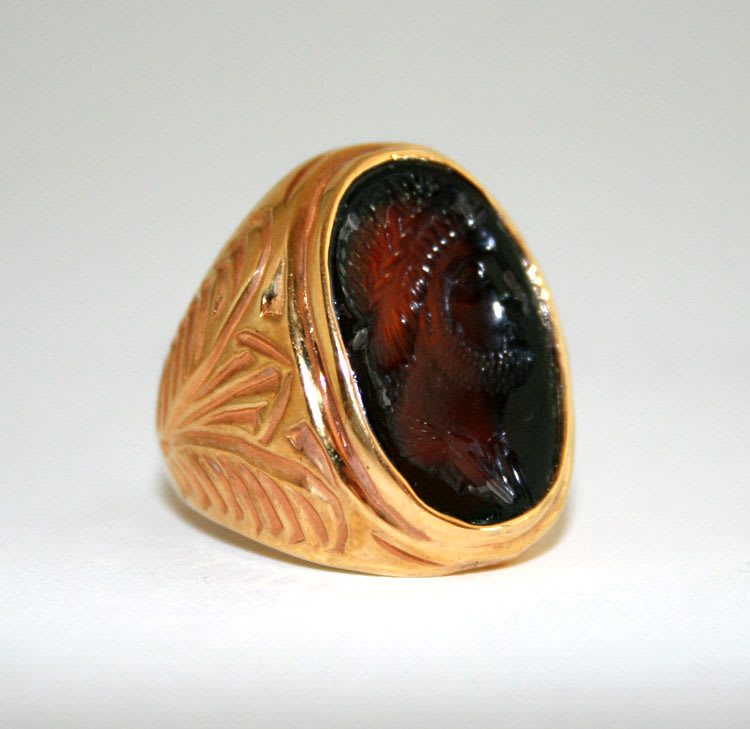Carnelian Intaglio Ring Depicting the Bust of Emperor Hadrian, 100 CE - 300 CE
Carnelian
DK.057
The art of glyptics, or carving on colored precious stones, is probably one of the oldest known to humanity. Intaglios, gems with an incised design, were made as early as...
The art of glyptics, or carving on colored precious stones, is probably one of the oldest known to humanity. Intaglios, gems with an incised design, were made as early as the fourth and third millennia B.C. in Mesopotamia and the Aegean Islands. They display a virtuosity of execution that suggests an old and stable tradition rooted in the earliest centuries. The tools required for carving gems were simple: a wheel with a belt-drive, a set of drills and abrasives were absolutely necessary since the minerals used were too hard for a metal edge to leave as much as a scratch on them. A special difficulty of engraving intaglios, aside from their miniature size, was that the master had to work with a mirror image in mind. In imperial Rome, members of the royal court and nobility often wore portraits of the emperor engraved on gems. Such tokens identified the political allegiance of the wearer and were sometimes given by the ruler himself as marks of special favor. This ancient gem is mounted in a magnificent ring of 18 karat gold.



